The other day I was in a group Messenger chat with some college buddies talking about some of the TV shows we grew up with and how awful/awesome they were (Street Sharks anyone?). Well anyway, The Mighty Morphing Power Rangers came up, and a few of us started talking about the new Clash Royal/Mortal Kombat style app they made as an ad for the movie reboot. What is great is that this was around the same time I was doing some industry research for auto group client. Not long after I typed the words power rangers (literally it was a screen refresh) I was served the following ad.



Creepy, right? However, this is the new normal. Everything is tracked, monitored, analyzed then converted into some sort of advertisement. That’s the industry today. Most savvy Internet users understand this to some degree, but allow me to show you exactly how far this rabbit hole can go using a few test industries.
Industry 1: Automotive
Objective: Selling/Leasing New Accura and Lexus and high-end Ford (sports cars)
For an automotive group with multiple dealers, it’s okay to make your geographic area rather large for this industry. The internet has changed the way people buy cars. They will have no problem driving an hour or two when the deal is right. So DMA it is!

Next, we move onto age range. While we are looking at three distinctly different brands, all three have something in common: They are all a high dollar product. As such, we have a few options to create this audience. For the sake of word count, we will “Goldilocks” this
- Go micro and break out multiple small audiences broken up by age, behaviors, and interests all featuring different creative and unique messaging for each.
- Go macro with the ages and creatives and find as many small pain points as you can that 1 or 2 solutions can fix and create an audience that meets them all.
- Go Uber macro not really focusing in on any one niche but rather encompass all of them.
Your choice will depend on your media buy and the cost you are willing to pay for creatives and daily petting/maintenance for the ads. For this experiment, let’s go rather broad. It should be noted that broad means something totally different in digital compared to traditional. What we do will still be incredibly targeted don’t you worry.
So, now that that is decided, let’s pick ages. Since we are going broad with the audience, we are going to keep the ages at 23-55 while also targeting people who are English speakers. While there is something to be said for targeting based on language, for this demo we are just going to focus on English.

Facebook has doubled down with their partner data collectors on a number of different industries with tons of different categories. For example, you have full access to Polk & Axicom just to name a few
Partner Category provided by Oracle Data Cloud. Multi-sourced, US consumer household information from IHS Automotive (Polk) that draws from geographic, demographic, and area-level vehicle characteristics validated using actual vehicle registration data.
But let’s get into it. Here are our Automotive Categories.
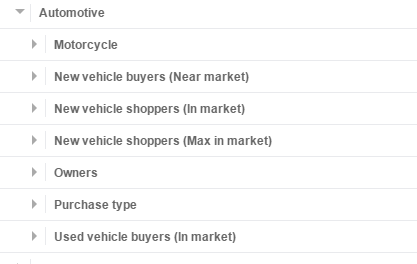
Our goal, if you remember, is to Sell/Lease New cars. So, let’s dig into it. Here is how I would build this out as a middle tier audience.
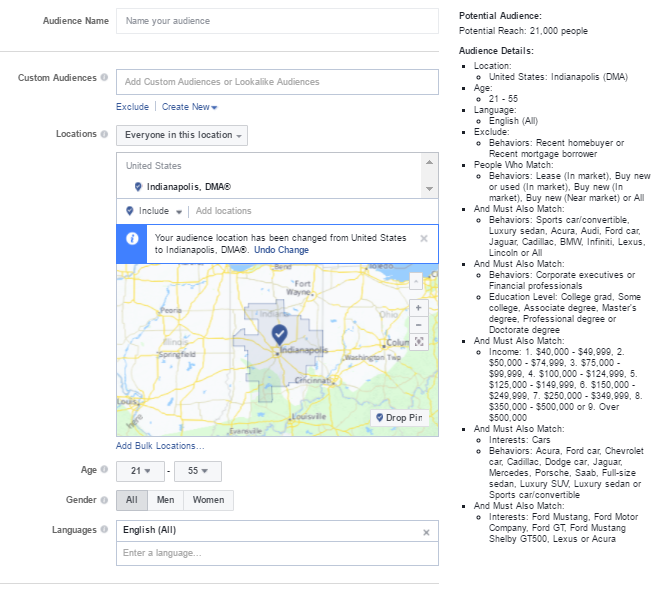
This is entry level depth with no customer base start with a custom audience and narrow from there. Keeping our goal in mind, 20k is a good number. What this number means is there are at least 20k people who are:
IN MARKET (buying in 180 days)
NEAR MARKET (Buying in 360 days)
MAX IN MARKET (buying in 90 days)
We are targeting people who are interested in the competitors, previous owners of competitors, have the disposable income to afford these higher end products. Not to generalize, but more often than not, this person has at least some form of higher education whether they completed it or not. We want to also target people who may have the disposable income to purchase these higher value items. This is also why I excluded people who recently purchased a house. Having recently done that myself, I know that it is not a low-cost endeavor.
There are multiple ways I could both increase and decrease this audience size. For example, we could bring in custom or look-a-like audiences, which are comprised of people who are similar to your current customers. To do this we would need to upload your current CRM data. We could also niche it out. Say only target SUV’s to families, sports cars to people with no kids or are empty nesters. One of my favorites for this would be to even target people based on the age of their car.
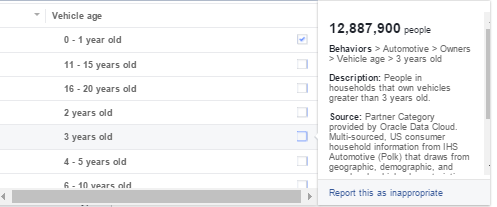
This would allow us to target people who are in a lease that is about to ending by selecting the age of certain cars, or say they have a junker, and it’s time to upgrade. Say they are big into the aftermarket market, and they like to add upgrades or have been to a lot of different service departments. That info is just another tool in our wheelhouse.
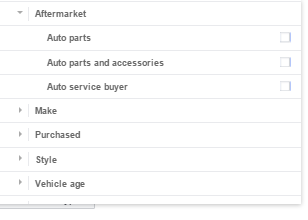
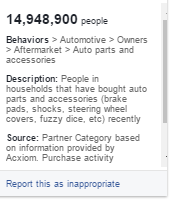
Industry 2: Firearms
Goal: Build Awareness around a New Gun Store/Range Opening
Now, this is incredibly difficult as Facebook is VERY strict when it comes to things like weapons. Their official policy is: Ads must not promote the sale or use of weapons, ammunition, or explosives. It should be noted that any ad you do relating to guns cannot directly end in the sale of a gun. WTF, right?
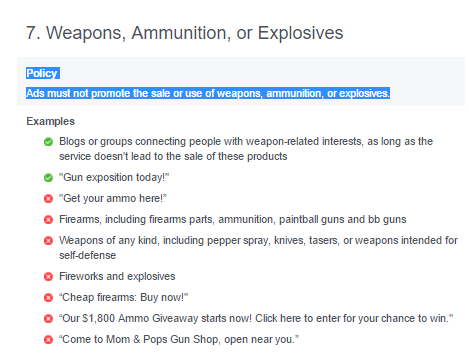
So how do you do it? I had a long talk with some of my reps inside Facebook and I eventually found a loophole. Your landing page cannot promote the sale of firearms or anything relating to firearms. A gun range, however, falls through the cracks. So, there are some options. Have your landing page be a Google map, a page on your website (so long as you don’t list prices or inventory) or your phone number. 

So it’s a Catch 22. You obviously need to sell guns, but that can’t be your main goal with Facebook ads nor can they be talked about, or mentioned. The beauty is if you target the ads right you won’t have to. So how do we do it? Let’s dive in.
The goal here is to bring people into the store so we would use a Local awareness ad, targeting a radius around your physical address. Let’s say 5 miles?
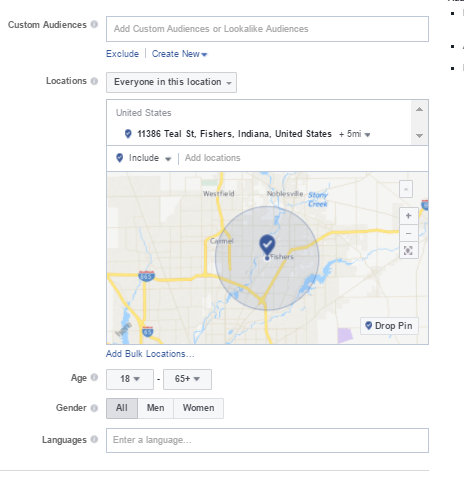
Now let’s dive in. With this one, we will start with just Interest. There are a crap ton relating to guns, even though you cannot advertise guns. How awesome is that? We kept the age range 18 because that is the legal age in Indiana to buy a gun, and went all the way up to 65.
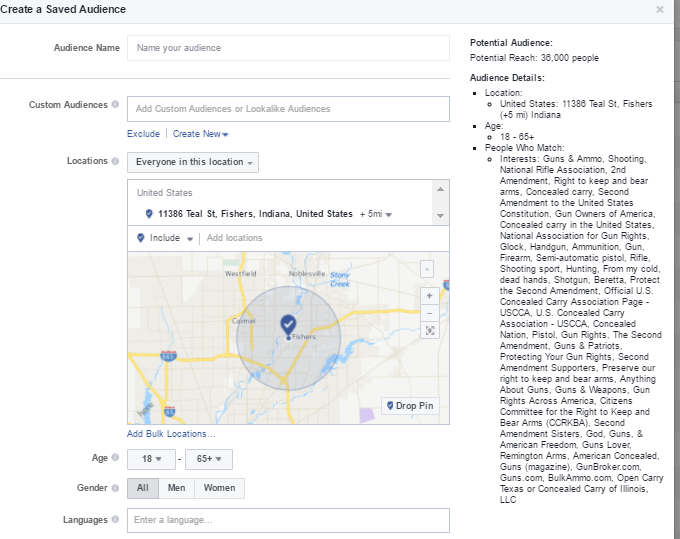
Just with interest, there are 36k people. Now let’s get narrow…. Gun owners tend to be slightly more conservative. That is not always the case but that is their base. These are things we can target.
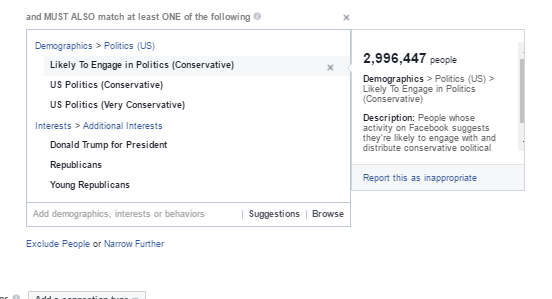
More often than not, they will be the outdoor types. But again this is not always the case. Mall warriors are a thing, or someone who wants to live out their Call of Duty Fantasy may buy. So, let’s toss those in there as well.
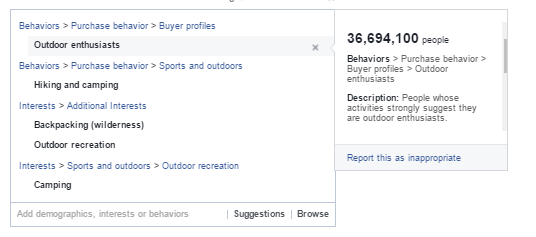
All in all, this gets us to around 20k
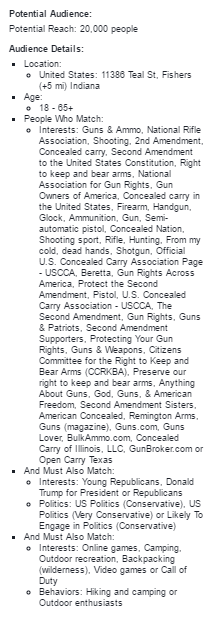
Kinda fun, right?
Industry 3: Apartment Complex
Goal: Lease Apartments
Let’s talk living. Facebook has a ton a very useful and specific targeting options for a variety of living situations. Imagine we have an apartment complex that caters to a young professional crowd. It’s in a high-end area of a big city. Prices are running $1300-$2600/mo. So how do we target this? In we go. As always start with your geo. With apartments, we can again go pretty wide. One thing to want to keep in mind is you want to make sure you just targeting people who live in the area.
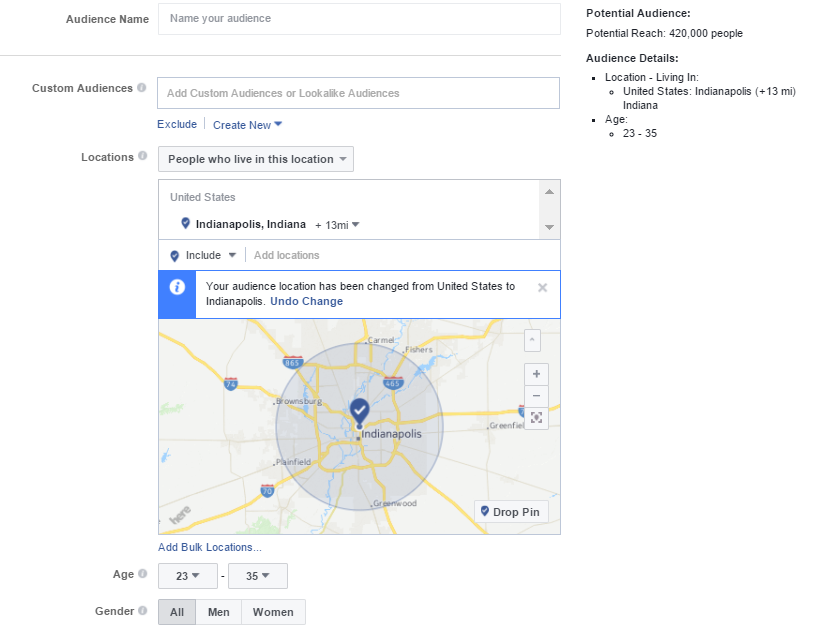
Now let’s start cracking into who they want. The ideal resident for a high-end apartment in a downtown area will fall into a couple of buckets.
- Higher income,
- Aged 23-35 C
- Renters
- Millennials
- No kids
Let’s drop those in an audience and see what we get.
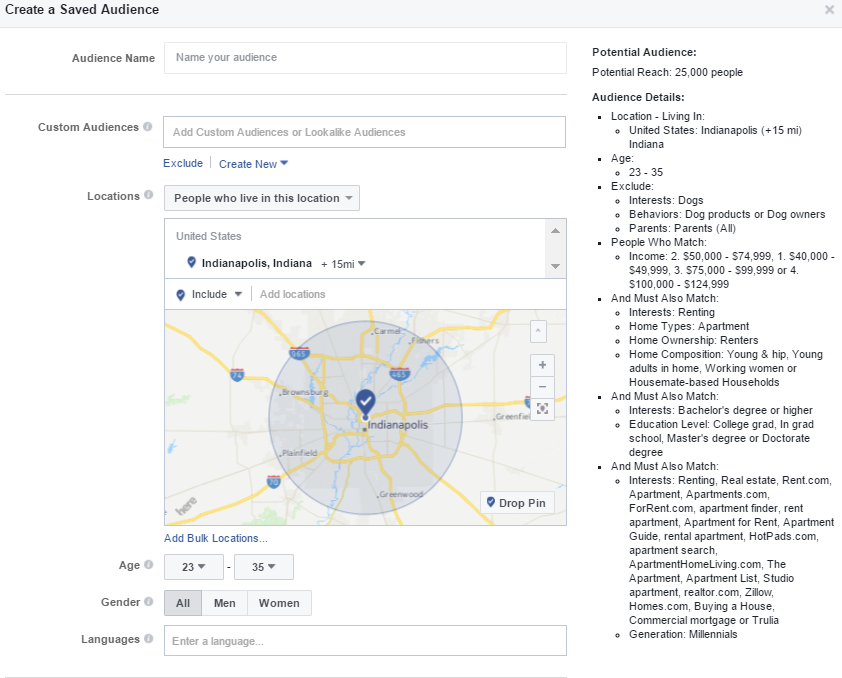
Let’s break this down. Many apartments in downtown areas won’t allow for pets. Many are above bars, which likely won’t be conducive to raising kids. Downtown living is expensive so a higher disposable income is necessary, kids are often not going to allow for that. On top of all that we want to get the ads in front of people when they are looking for a new living. Therefore, targeting people who would have went to sites like Apartments.com rent.com etc. would obviously be beneficial.
Now, all of these audiences are a good, narrow small core audiences. This will get you clicks, leads, engagements, views, whatever your objective. Once we have a baseline after running for a week or so we can start getting very very targeted.
Enter Custom Audiences.
It is with this that we can begin to get very specific on who we want to really narrow down on that ideal customer. Have a list of emails? Let’s drop those into Facebook and match it to Facebook users.
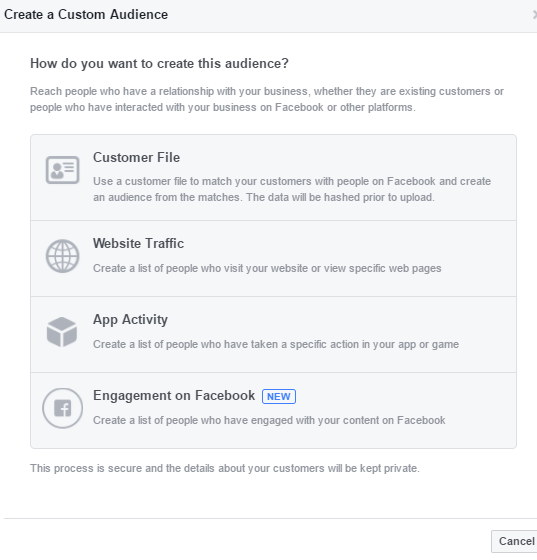
Each of these selections has within them their own set of fun little features. My favorites are Customer file and Engagement on Facebook.
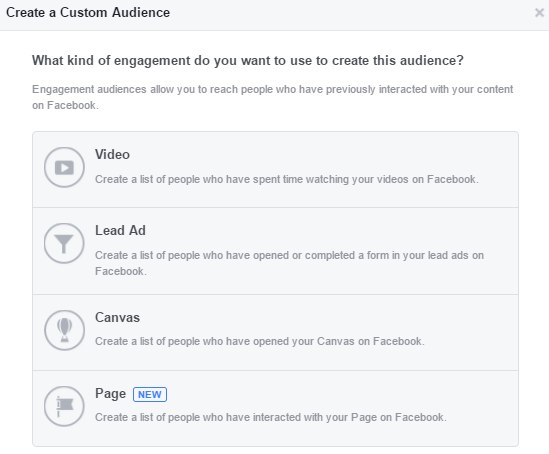
When we create a custom audience, we can add it to any of the previously created core audiences and really make some magic happen.
So what do you think? Did I miss something in the audience creations above? Something you would do differently? Tell us below!




